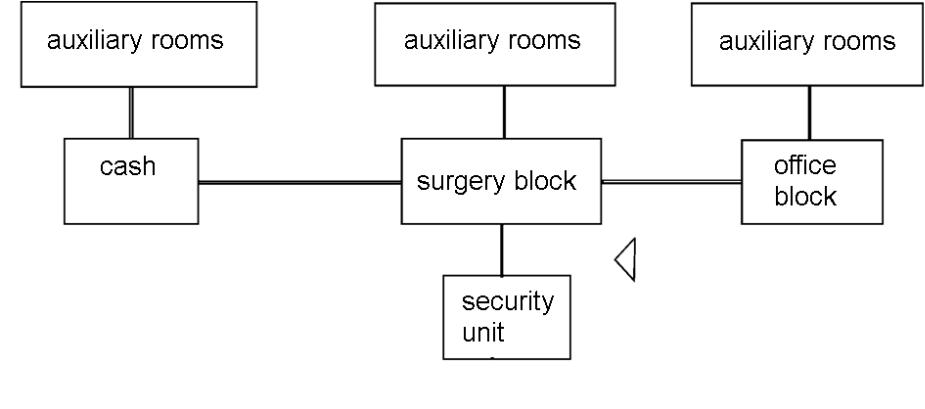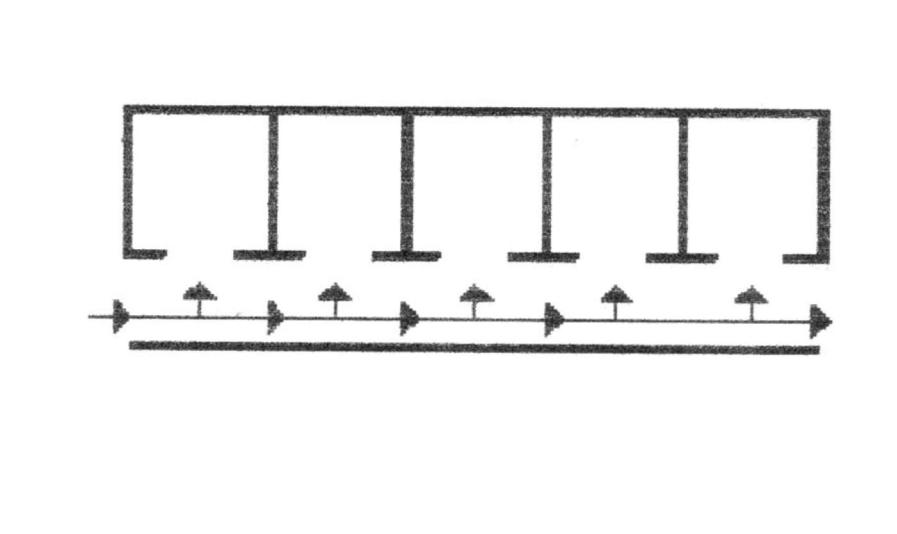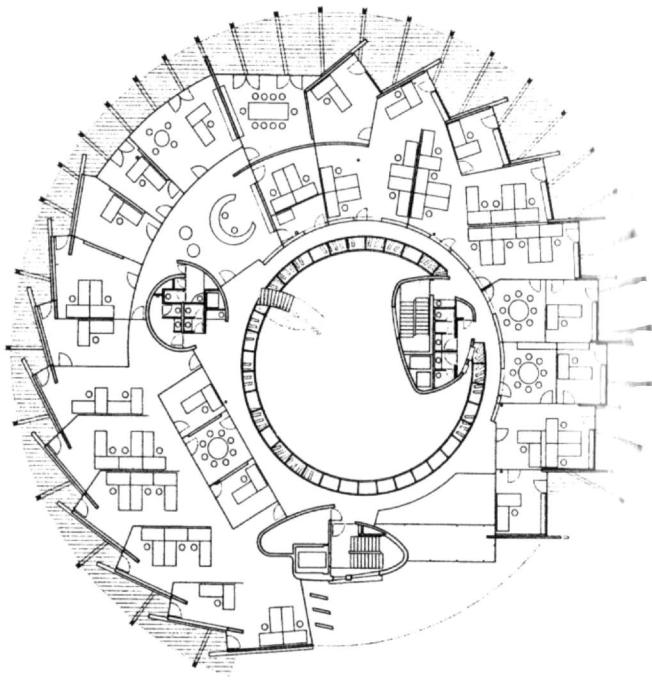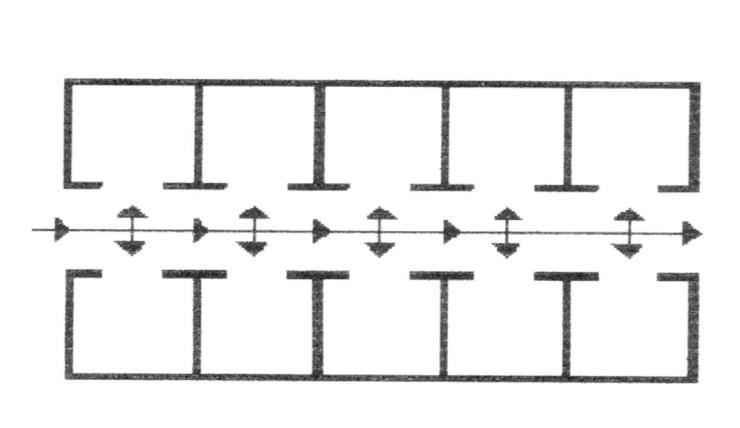
11104
.pdfThe basis of architectural interpretations is a wide range of phenomena related to the nuances of the interaction of form and function. N. A. Ladovsky designated creative credo in 1919-1921: "The design is part of architecture as it defines the concept of space”, "the technical design is the connection of designed material elements according to a certain plan - a scheme to achieve power effect."
M. Ya. Ginzburg spoke of the construction as an "aesthetic system": "The constructive system, thanks to our perceptive experience and psychophysiological features of a person, gives rise to another system that selfintroduces and at the same time flows and depends on the construction of the world of form, or, correctly speaking, the aesthetic system".
Based on the above, we conclude that the building, as a whole, must consist of different quality systems with different dominants, by which we understand function, structure and form. When creating an architectural object the architect’s task is to link these components into a single holistic system.
SPACE-PLANNING STRUCTURE OF BUILDING. FUNCTIONAL ZONING
The space-planning structure of the building is a system of combining the main and auxiliary rooms of selected sizes and forms into a single integral composition.
The composition structure is a system of bonds that combine individual elements of the composition into a single whole. As noted above, all functions of a public building can be divided into "dominant" and "related" .
All functional processes in a public building, regardless of its dominant function, can be divide into general, specific and auxiliary.
Functional zoning is breakdown of the structure into zones
from homogeneous groups of rooms based on commonality of their function.
Functional blocks are common in function groups.
The following types of functional zoning are distinguished: horizontal, vertical, horizontal-vertical.
The main task of functional zoning is to identify the relationships between rooms (or groups of rooms) when maintaining their clear distinction.

HORIZONTAL FUNCTIONAL ZONING
hall
Horizontal functional zoning - all functional units are located in the same level and connected by horizontal communications

VERTICAL FUNCTIONAL ZONING
hall
Vertical functional zoning - all functional units are located in different levels and connected by vertical communications

HORIZONTAL-VERTICAL FUNCTIONAL ZONING
hall
Horizontal-vertical functional zoning is based on the combination of the above two types and is in practice the most common.
COMPOSITE DIAGRAMS OF BUILDINGS. ROOM GROUPING DIAGRAMS
We must distinguish between the following basic space grouping schemes that determine the organization internal space of the public building:
-cell;
-corridor;
-anfilade;
-hall;
-atrium;
-pavilion;
-mixed (combined).

CELL DIAGRAM OF SPACE GROUPING
The cell diagram of space grouping consists of parts, in which functional processes take place separately in independently functioning spatial cells, having a common communication connecting them with the external environment.


ROOM GROUPING CORRIDOR DIAGRAM
Corridor diagram of space grouping consists of large cells containing parts of a single functional process and connected by common linear communication - corridor.

